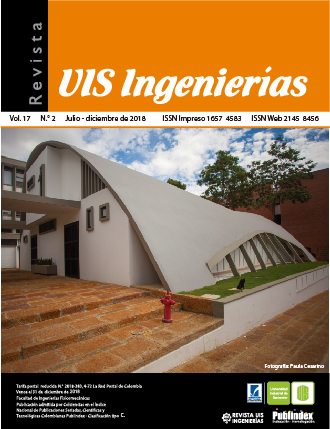Temperature control of a saturated steam autoclave for sterilization of surgical equipment
Published 2018-06-12
Keywords
- Saturated steam sterilization autoclave,
- system identification,
- PID control
How to Cite
Abstract
Surgery equipment sterilization is an important part of many serious medical procedures since it prevents infections and disease transmission. The saturated steam autoclave may be used to carry out the sterilization process according to the required medical standards. For this, certain temperature and pressure conditions must be granted in the sterilization chamber of the autoclave to perform an accurate sterilization process. However, the dynamical behavior of an autoclave tends to be complex, requiring the use of control strategies to perform a correct sterilization process. This paper presents the identification and temperature control of a saturated steam autoclave for the sterilization equipment employing the pole placement technique. Initially, temperature data of autoclave was acquired using a data acquisition system. Then, a linear model of the autoclave was obtained. Using the linear model, a PI and PID controllers were tuned to achieve the desired closed loop specifications. Controllers were validated in Simulink for the temperature conditions of the autoclave in presence of external disturbance and random noise in the feedback loop. Results show that the PID controller has a good performance on the autoclave temperature regulation in presence of external disturbances.
Downloads
References
Huijs J 2014 "Facing the standards gap: an autoclave for the rest of us" Appropriate Healthcare Technologies for Low Resource Settings. Londres, UK, 2014.
Thomas M M, Kardos J L and Joseph B "Shrinking horizon model predictive control applied to autoclave curing of composite laminate materials" American Control Conference, Baltimore, MD, USA, 1994.
Jiang Y and Wu R "Mixed with lime powder on the performance test of autoclaved concrete". Second International Conference on Mechanic Automation and Control Engineering (MACE), Hohhot, China 2011.
Li Y and Fu G. "The influence of autoclave on plastic encapsulated microcircuit". Prognostics and System Health Management Conference, Zhangiiaijie, China, 2014.
F. Valencia, C. Mejía, V. Erazo, “Desarrollo de una prótesis de rodilla para amputaciones transfemorales usando herramientas computacionales,” Rev. UIS Ing., vol. 16, no. 2, pp. 23-34, 2017. Doi: https://doi.org/10.18273/revuin.v16n2-2017002
J. Fuentes, S. Castro, B. Medina, F. Moreno, S. Sepúlveda, “Experimentación de controladores digitales clásicos en un sistema embebido aplicado en un proceso térmico,” Rev.UIS Ing., vol. 17, no. 1, pp. 81-92, 2018. Doi: https://doi.org/10.18273/revuin.v17n1-2018008
Dufour P, Tour Y, Michaud D J and Dhurjati P S "Optimal trajectory determination and tracking of an autoclave curing process: A model based approach". European Control Conference, Karlsruhe, Germany ,1999.
Aström K J and Hägglund T Control PID avanzado, 2da ed, Madrid, España: Pearson Prentice Hall, 2009.

